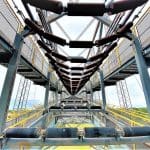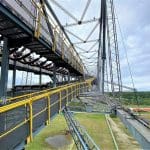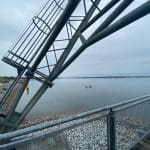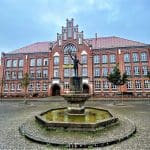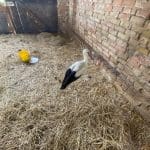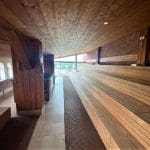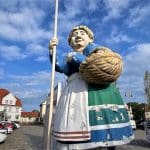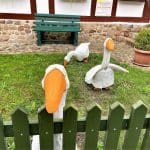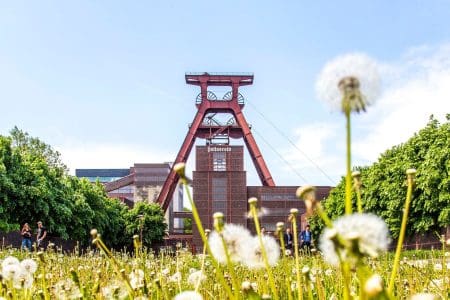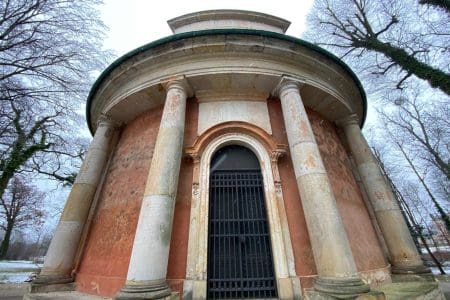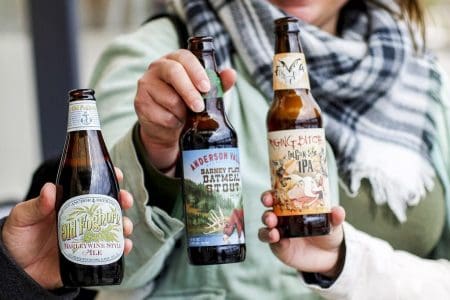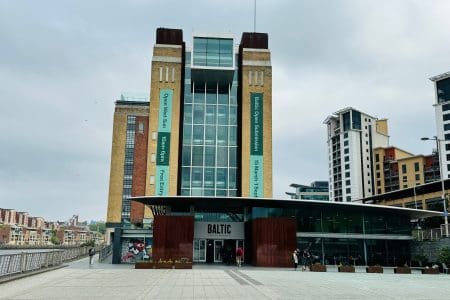Mark Bibby Jackson goes on a trip to Brandenburg Germany searching for its industrial heritage and discovers a visionary future hidden in the past.
It was in Essen Germany that I first realised my fascination for industrial heritage. Then I had stared up in amazement at the Zeche Zollverein, dubbed the Metropolis of the coal mines. Now I found myself staring at the F60 conveyor bridge in Lichterfeld, equally transfixed by its Transformers equivalent.
Climbing the F60
Measuring 502 metres in length and weighing some 11,000 tons F60 is longer than the 300-metre Eiffel Tower is tall – so, perhaps the reclining Eiffel is more appropriate. Built between 1989-91 and weighing some 11,000 tonnes, the F60 is a mighty beast that operated for less than two years before it was bought by the local community and converted into a museum that opened in May 2002.
It tells part of the story of the 150-year history of open cast lignite mining in Lusatia, an area which encompassed parts of Brandenburg and Saxony as well as stretching into Poland, and is now part of the European Route of Industrial Heritage.
F60 Photo Gallery
Walking along F60’s long arms, the scale of this industrial beast is staggering. Although noted for its length it is also some 60 metres high – hence the F60. From its summit you can see the surrounding countryside, dominated by the Bergheider See, a lake created from the former Klettwitz-Nord open cast mine. This is now being filled to become a tourist attraction with beaches and water activities. It is part of the Lausitzer Seenland or Brandenburg’s Lake District, the largest collection of man-made lakes in Europe.
The biggest moving machine in the world, according to our guide F60 is one of five overburden conveyor belts built in the former GDR, the other four are still in operation. It used to convey spoil from the seam to dump sites, removing up to 29,000 cubic metres of spoil per hour. Now, at its feet stands a solar farm – a sign of the shift in times.
Prior to Covid up to 70,000 visitors visited F60 in addition to those who attended the series of concerts from opera to German folk held here each year. Although surely heavy rock is most appropriate.
The Manchester of Germany
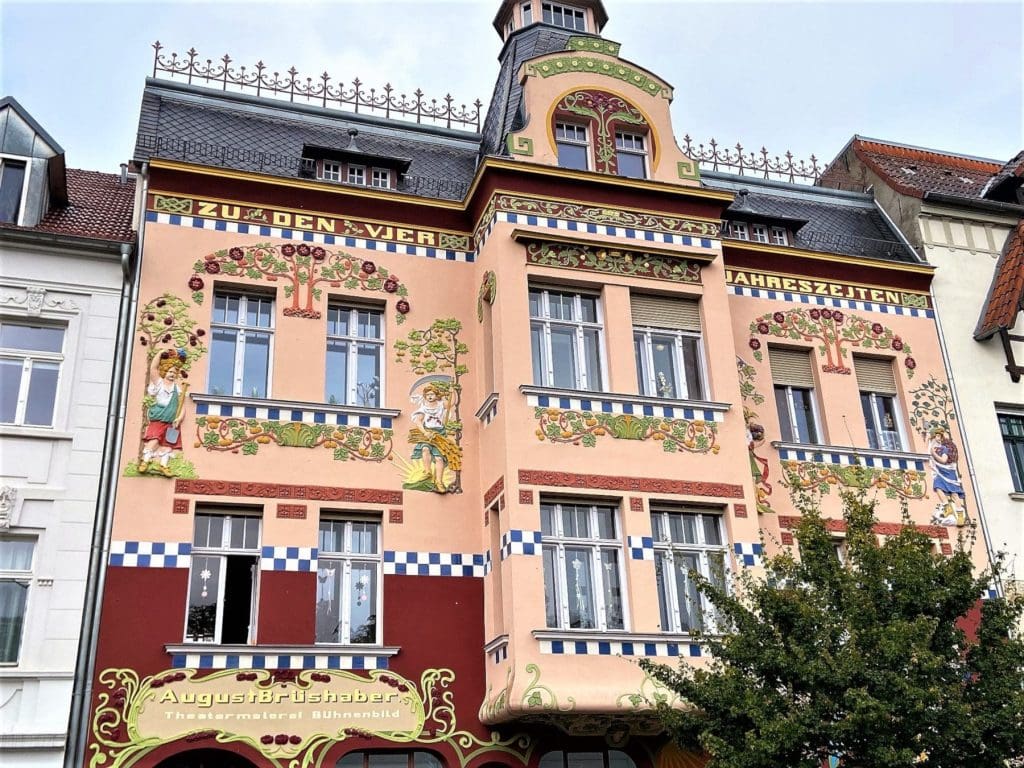
My visit to F60 is on the third day of my visit to Brandenburg the province that wraps itself around the German capital of Berlin like a comfort blanket. The previous day I had visited the city of Wittenberge, an hour or two train ride from Berlin.
The old part of the city dates back to the 14th century, but it is the art nouveau architecture sprinkled around the city centre close to the railway station that is most striking. Opposite the City Museum in the Old Town is a street of social housing built shortly after the First World War. Each building had a small element of greenery in order to provide some fresh air for inhabitants and improve hygiene. Everhard Bruns was the planner of the social housing project.
Appropriate enough for a town situated so close to Germany’s Lake District, the city owes more than a bit to Manchester, including the terraced workers houses in the Packhof quarter which my guide informs me are ‘Manchester-style’. This was the product of Wittenberge’s growth in the 19th century. Even in GDR times it was called ‘Stinky Town’.
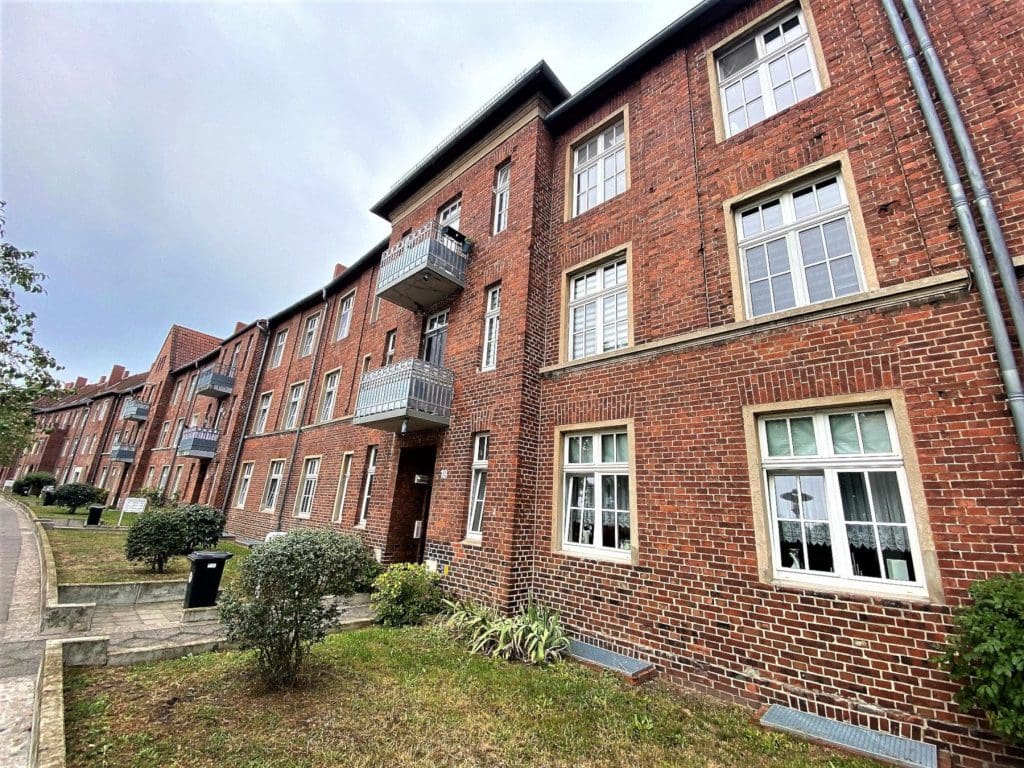
The man largely responsible for Wittenberge’s expansion was Salomon Herz (1791-1865), who convinced the Berlin-Hamburg Railway Company, of which he was a shareholder, to divert their line through Wittenberge in 1846. This was ostensibly due to its situation on the river Elbe, although you feel that access to Herz’s oil mill, built two decades earlier, might be the entrepreneur’s prime objective.
Old Mill and Singer
Work on the Old Mill commenced in 1823. Flax, rapeseed and turnips were imported from the countryside and converted into crude oil. Eventually raw materials came from Romania, Russia and India.
The mill closed in 1991 upon the Fall of the Wall and reopened two decades later as wellness hotel and brewery Elbe Resort. It received monument status for its special architecture in June 1992.
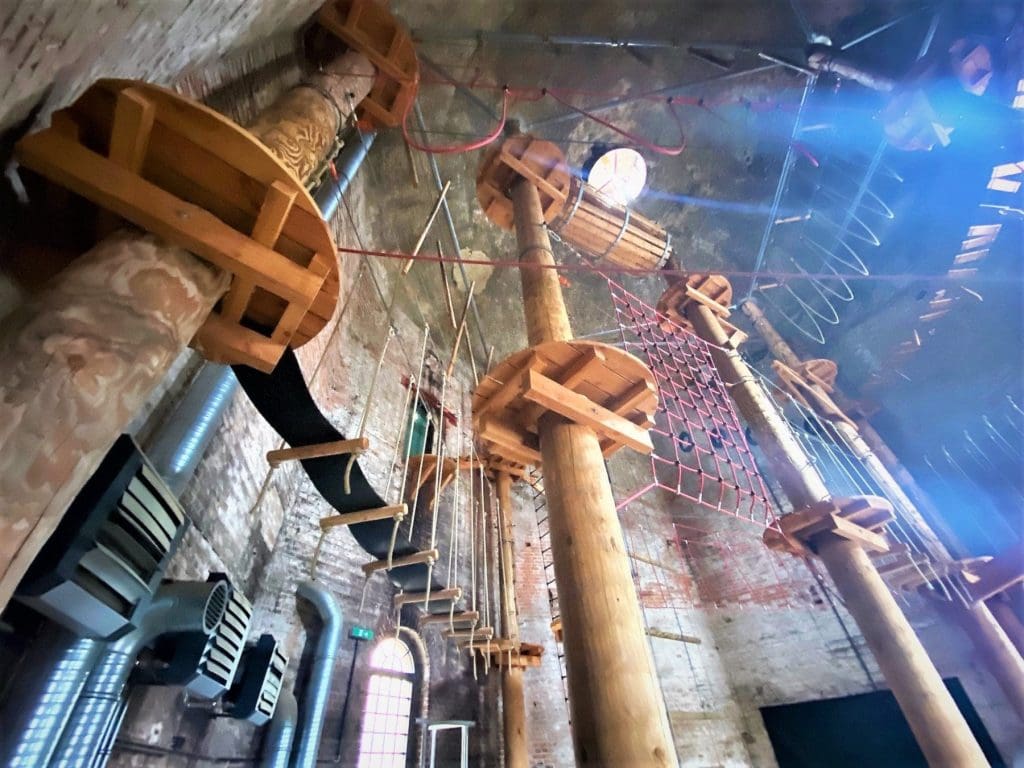
The resort is a wonderful example of what can be done with forgotten industrial heritage given the right hands.
The buildings have been painstakingly restored and given new functionality in a largely post-industrial society. For instance the twin oil tankers have been converted into a climbing wall and diving tower. The old seed room now houses Loft Spa offering a great view of the river Elbe from its roof terrace, relaxation area or gargantuan 2,300sqm sauna. No wonder it attracts non-staying wellness guests.
However, it was not wellness that I had been booked in for but a bit of beer tasting as I sampled three beers from the on site HerzBräu brewery – a pilsner, a special beer and a dunkel. The last was my favourite although the special beer deserved its nomenclature. The resort also hosts the Elbeland Festival.
Wittenberge is perhaps more famed for its Singer Factory than Old Mill.
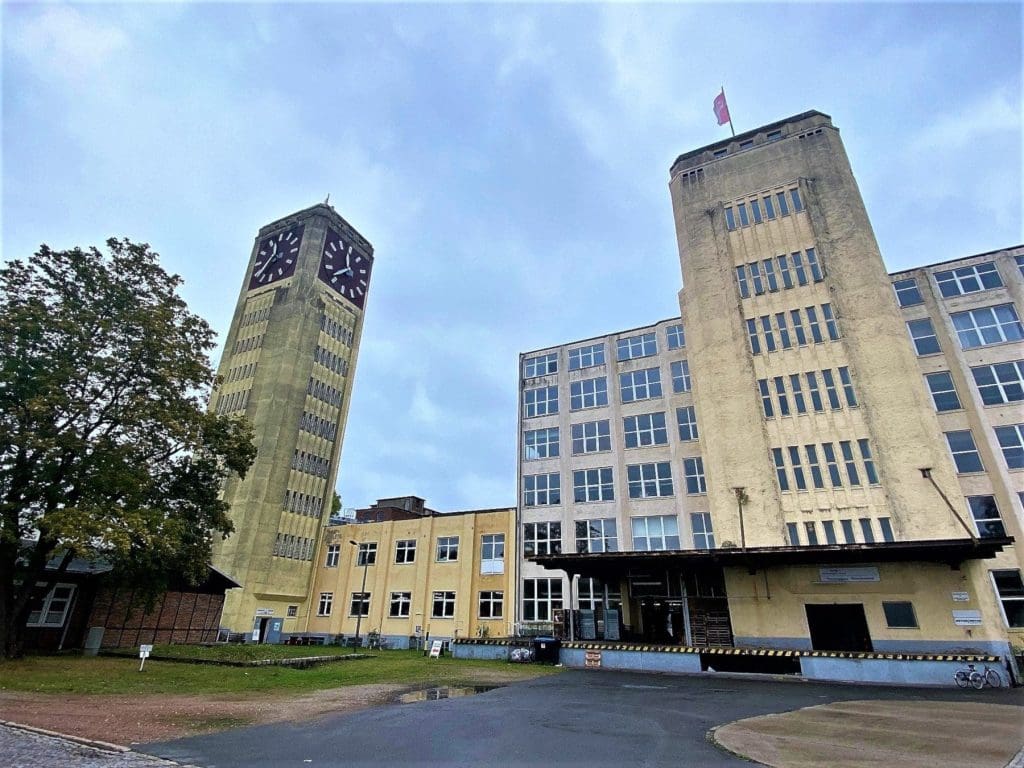
Built in 1903, this is biggest sewing machine factory in mainland Europe. You can, like me, climb the stairs to the top of the tower stopping to see the extensive collection of sewing machines along the way. Alternatively, you can view the magnificent Bauhaus-inspired clock tower built in 1929 from the outside and save your legs.
Lauchhammer Biotowers
The whole of Brandenburg’s Lausitzer Seenland (Lusatian Lake District) is a testament to the post-industrial regeneration of the area. As you look at a map you will notice the area is dominated by lakes – all artificial.
Europe’s largest artificial lake landscape consists of 14,000 hectares of water surface with 20 lakes, and navigable canals interconnecting them. There are also kilometres of cycle tracks.
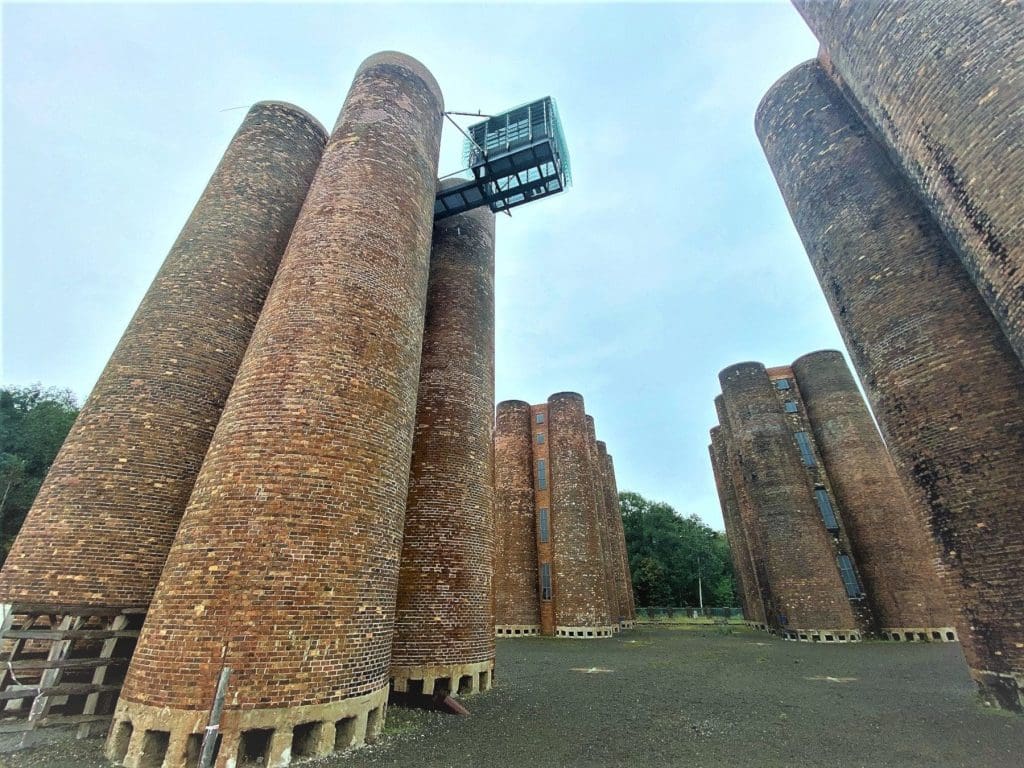
The first lake – Senftenberger See – was opened 50 years ago from a former coal mine. Prior to this Lusatia was the Black Country of Germany. The air was thick with the fumes billowed out from factories and mines. Everything was black with dust.
Despite such intensive production, the area only produced inferior brown coal. At Lauchhammer they tried to convert this into black coal, which could be used to make steel. The process created a lot of contaminated water which was cleaned at the Lauchhammer Biotowers, before being deposited in the waterways. The idea was to reduce the GDR’s reliance upon black coal imports from Poland and the USSR.
Built in 1951, the cleaning towers have been converted into a museum which is open to the public at weekends.
The impressive towers stand like proud monuments to Brandenburg’s industrial past. It is interesting to climb to the top and then cast an eye over the green space where sheep roam across green fields under which lies the disused alchemists’ factory. Fish, frogs and lilies occupy the tanks where the cleaned water was held.
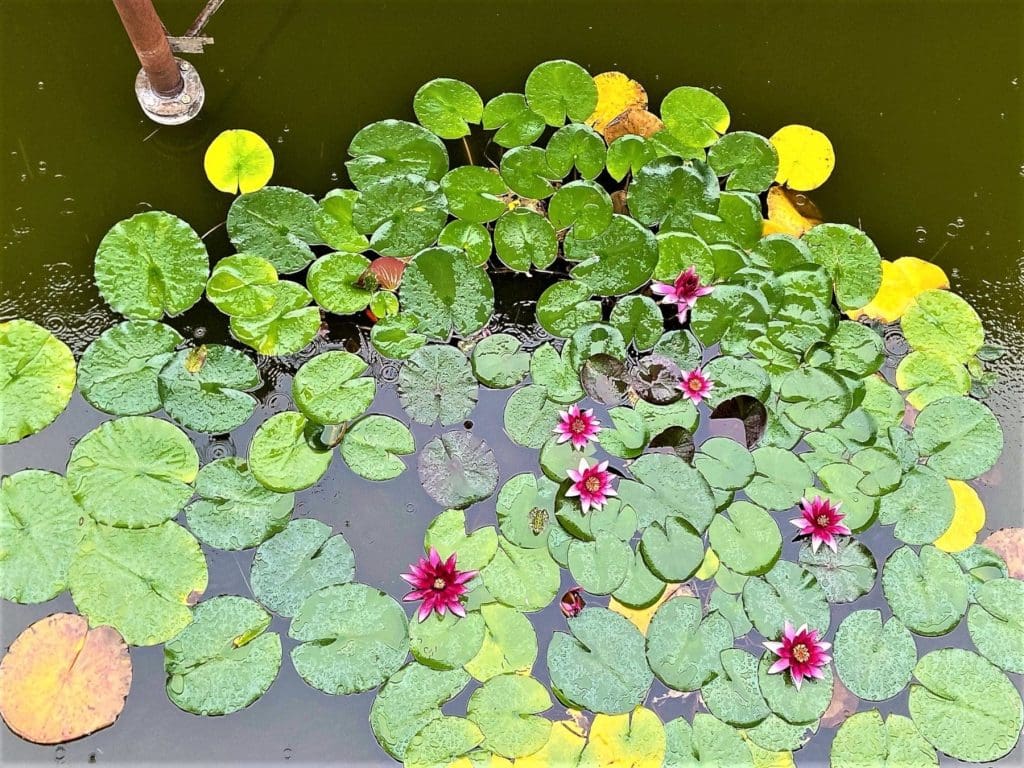
Marga Garden City
My final morning in Brandenburg is spent at Marga Garden City in the town of Senftenberg.
Marga was part of the Garden City movement that originated at the turn of the last century in England. Its creator Ebenezor Howard wanted to improve the living conditions of factory workers. Howard’s Garden Cities of To-morrow was published in 1902, although it had appeared four years earlier as To-morrow: A Peaceful Path to Real Reform. The basic premise was to create a utopian mix of town and country where workers could land good jobs, fair wages and breathe clean air.
Letchworth and Welwyn Garden City were modelled upon these principles, as was Marga, which was built between 1907 and 1915 near the Lausitz Industrial Park.
Marga was designed as a ringed city with worker houses built around a main square which contained the school, church, and shopping and cultural centres. All this was within walking distance of the factory.
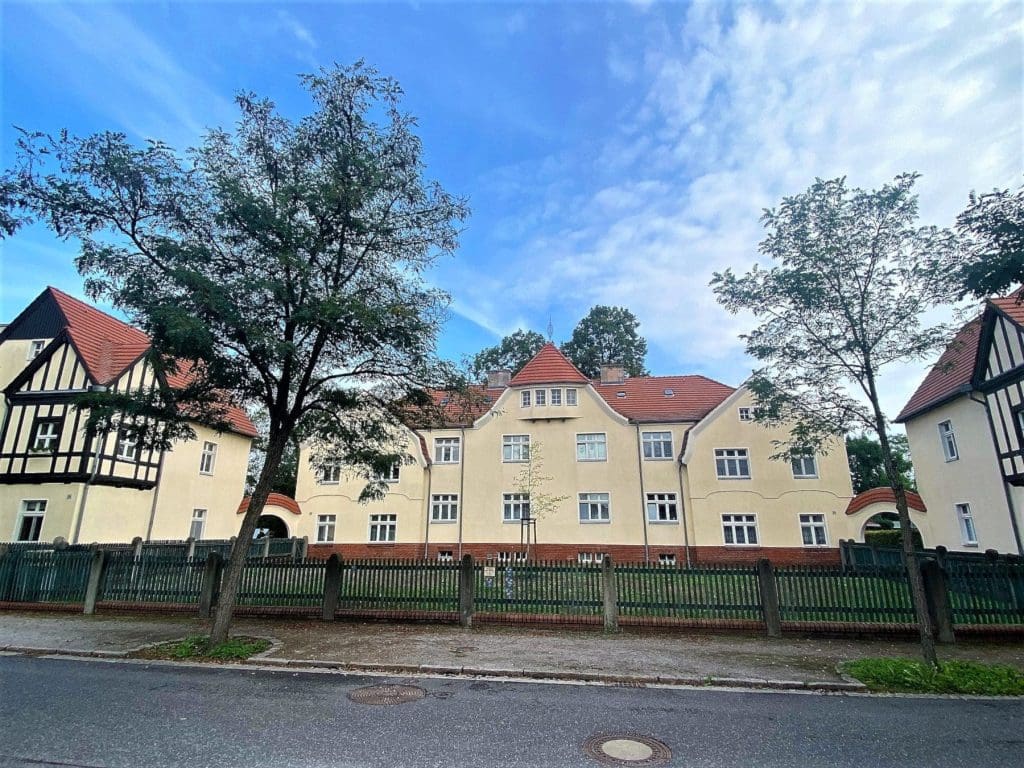
Each building had a garden so families could grow their own fruit and vegetables and enjoy the fresh air. Everyone had the same conditions, all were at the same level. Built by mining company IIse Bergba, it was named after the owner’s daughter Marga.
The first people moved in 1907. At its peak 1,200 people lived here. However, with the collapse of the GDR, the mines were closed and the area ran into neglect.
Marga, just like F60 and the Lauchhammer Biotowers benefitted from being recognised by the Internationale Bauausstellung (IBA) held between 2000 and 2010 in Brandenburg. The idea of the exhibition was to “re-interpret and renew the landscape in a rural region after mining”. Marga discovered a new life.
The IBA not only helped to preserve these wonderful examples of industrial heritage, but in creating the Lausitzer Seenland it also stimulated a green tourism industry from the ashes of the Black Country.
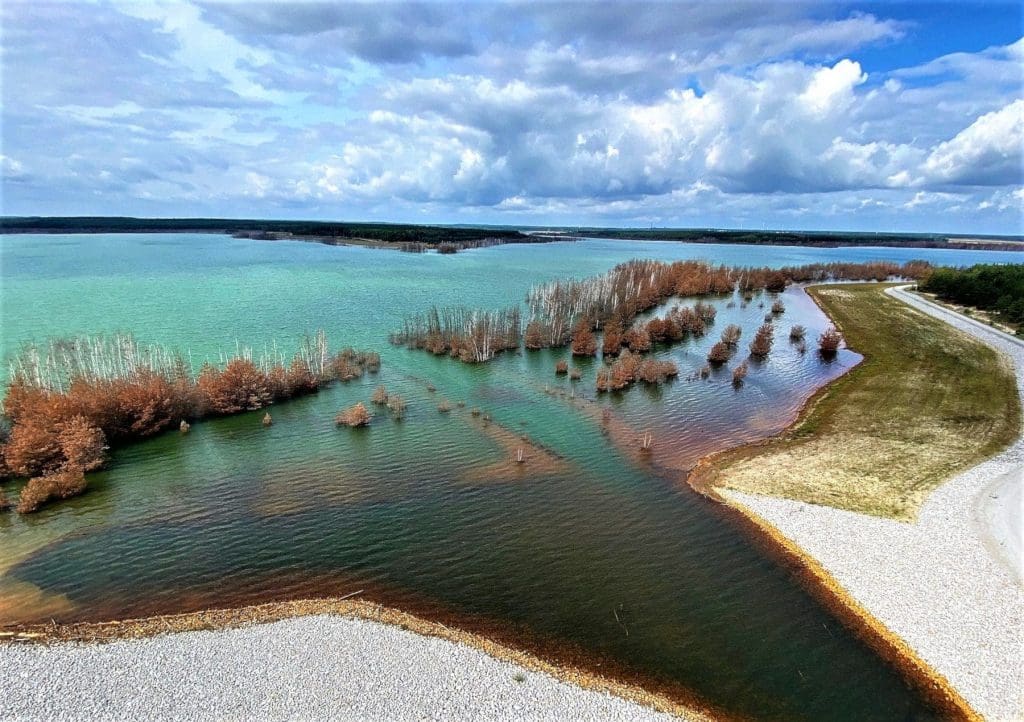
A Clean Future?
Travelling around Brandenburg, and talking to those who lived and worked here before the Fall of The Wall it is hard not to be struck by the way that the area has dramatically changed since the closure of the mines and the factories.
Initially there was a mass migration from East to West, with people seeking employment and a new life. Perhaps this is nowhere better seen than in Lenzen a ghost town on the former GDR / West German border that could be the setting for any dystopian film. This is where I stayed on my first night at the vegan Ahead Burghotel. Now some people are returning with the promise of a new greener tomorrow. I can’t help but think that this demonstrates the positive effect tourism can have upon a region, presenting an economic viability to an area devastated by the demise of its once proud industrial past.
Leaving Marga Garden City I have one more stop to make before returning to Berlin. The 30-metre tall Rostiger Nagel viewpoint was built in 2008 as a symbol of the mining heritage in the area. It was the miners themselves who dubbed it a Rusty Nail. I can think of no better place to conclude my quite unexpected and stimulating journey around the industrial heritage of Brandenburg. Standing at the top of the rusty nail looking at the beautiful regenerated landscape below across the Sedlitzer See, yet another lake created from the grave of an open cast mine.
Brandenburg Germany Photo Gallery
Other Eco Things To Do in Brandenburg Germany
Elbe-Brandenburg River Landscape Biosphere Reserve
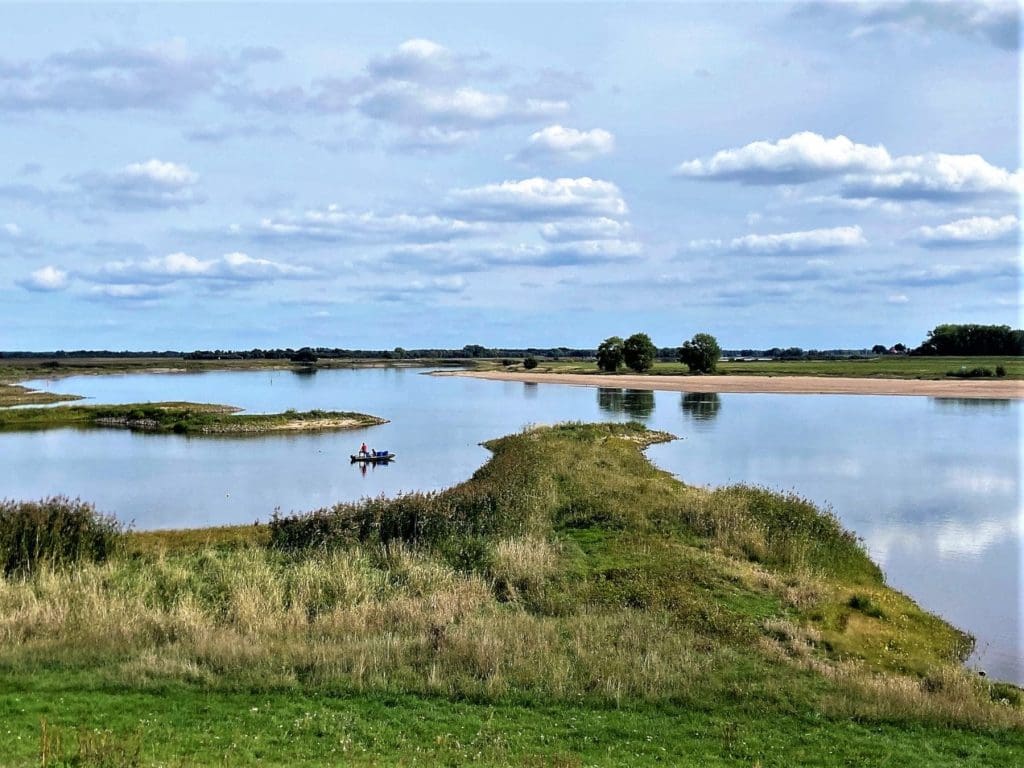
On my first day I visited the Elbe-Brandenburg River Landscape Biosphere Reserve. This is a wonderful area along the Elbe river, which has encouraged environmentally-sustainable land use. A cycle path stretches along the Elbe for 1,500km from Hamburg to the Czech Republic. I only had time for a short visit and walk along the path. The area is a popular breeding ground for birds with grey storks and cranes migrating here.
Places to Stay in Brandenburg Germany
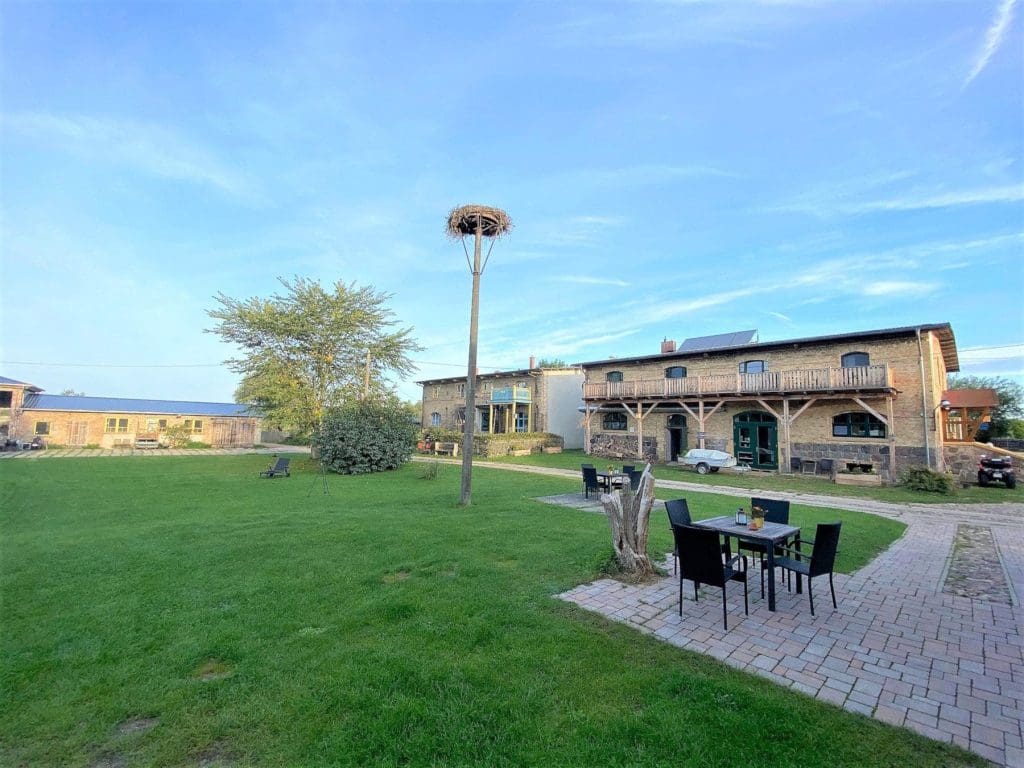
On my first night I stayed at the Ahead vegan hotel in Lenzen, which you can read about here. On the second I moved to Bäumi-Hof, a farm where the former barns have been converted into holiday apartments and rooms. The 26-room farm hotel has five pigs, two calves, 20 sheep, a stork with only one leg, and a dog called Finnie. There is also a brand new sauna – I was the second person to use it. If you really want to immerse yourself in nature this is a wonderful place to stay, and even better if you have some kids in tow.
Getting to Brandenburg Germany
Wittenberge is an hour from both Hamburg and Berlin by high speed train. Potsdam is situated on the Berlin S-Bahn.
Things To Do in Brandenburg Germany
For further inspiration on what you can do in Brandenburg Germany, visit the official tourism website.
All photos by Mark Bibby Jackson.

